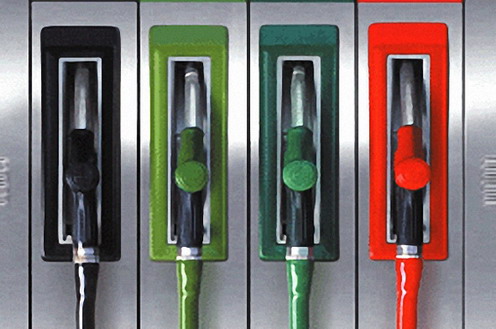The stability of the year-on-year rate is due to the higher rate for inflation of non-processed food and services which has offset the sharper drop in energy prices. In month-on-month terms, the general CPI rose by 0.6% in March, the same as in March 2015.
Energy product prices in March posted a year-on-year decline of -14.8%, seven tenths lower than in February. This greater decline was due to motor and heating fuels, which added a percentage point to the drop, to -15.2%, due to price trends affecting fuels and lubricants (-14.4%, versus -13.3% in February). Meanwhile, the year-on-year inflation rate for electricity prices remained unchanged at -14.2%.
Inflation on food in March stood at 1.5%, three tenths higher than February's figure. This increase is due in its entirety to non-processed foods, whose inflation rate rose from 0.8% in February to 2.2% in March. This, in turn, was largely due to the price trend affecting pulses and fresh vegetables, as well as fresh fruit. Meanwhile, processed food prices posted a rate of 1.3% in March, the same as in February, driven by higher prices of oils and fats (18.5%) and of potatoes and potato products (14.5%).
Core inflation (which excludes the most volatile elements of CPI, fresh food and energy) rose by a tenth in March to 1.1%, due to a slight increase in the price of services, up by one tenth to 1.4% year-on-year. This increase in the inflation rate of services was the result of the divergent performance of its component parts. Inflation rates for university education (0%) and urban public transport (-0.6%) remained largely unchanged, while interurban public transport and tourism and hotel and catering inflation rates grew by 1.8 and 0.1 points, respectively, to 0.4% and 1.6%.
These increases have a significant seasonal component due to the fact that this year Easter fell in the month of March. The other two components of core inflation - processed food and non-energy industrial goods (NEIG) - remained unchanged compared with February, at 1.3% and 0.5%, respectively.
In month-on-month terms, the CPI increased by 0.6% in March, the same figure as in March of the previous year. This increase is due to rising energy product prices and NEIG prices, up by 1.8% and 1.1%, respectively. In this latter group we would highlight the rising prices of the clothing and footwear component, up by 4.3% month-on-month, the same as in March 2015, as a result of the start of the new spring-summer season.
The prices of services have also contributed, albeit to a lesser extent, to the month-on-month increase of the overall CPI, up by 0.4%, due in part to the higher prices of tourism and hotel and catering (1.1%) and of interurban public transport (2.2%), this latter being affected by higher air transport prices (5%). Finally, food prices remain unchanged since February, due to higher processed food prices (0.1%) being offset by the drop in non-processed food prices (-0.2%). In this second group we would highlight lower fresh fish and fresh fruit prices, and higher pulse and fresh vegetable prices.
The year-on-year CPI in March remained negative in every autonomous region. Eight regions posted lower than the national average rates: Castile-La Mancha (-1.4%), and Galicia, the Region of Valencia, Cantabria and Castile and Leon (all -1.1%). Among the regions posting higher rates than the national CPI, the Basque Country (-0.4%) and Catalonia (-0.6%) posted the highest rates. The year-on-year constant tax CPI for March was -0.8%, the same as the general CPI.
The INE also published the harmonised CPI (HCPI) for March, the year-on-year rate being -1%, the same as for the previous month. If we compare this rate with the rate advanced by Eurostat for the whole of the Eurozone in March (-0.1%), the inflation differential in Spain's favour is up by one tenth, at -0.9%.
In short, the rate year-on-year of the CPI in March remained at the same level as in February due to the higher rate of inflation affecting non-processed food and services, which offset the stronger drop in energy product prices. Core inflation is up by one tenth to 1.1%, which reflects the dynamism of private consumption. The inflation differential in Spain's favour versus the Eurozone has improved by one tenth, with the resulting favourable impact on Spain's competitiveness and exports.





